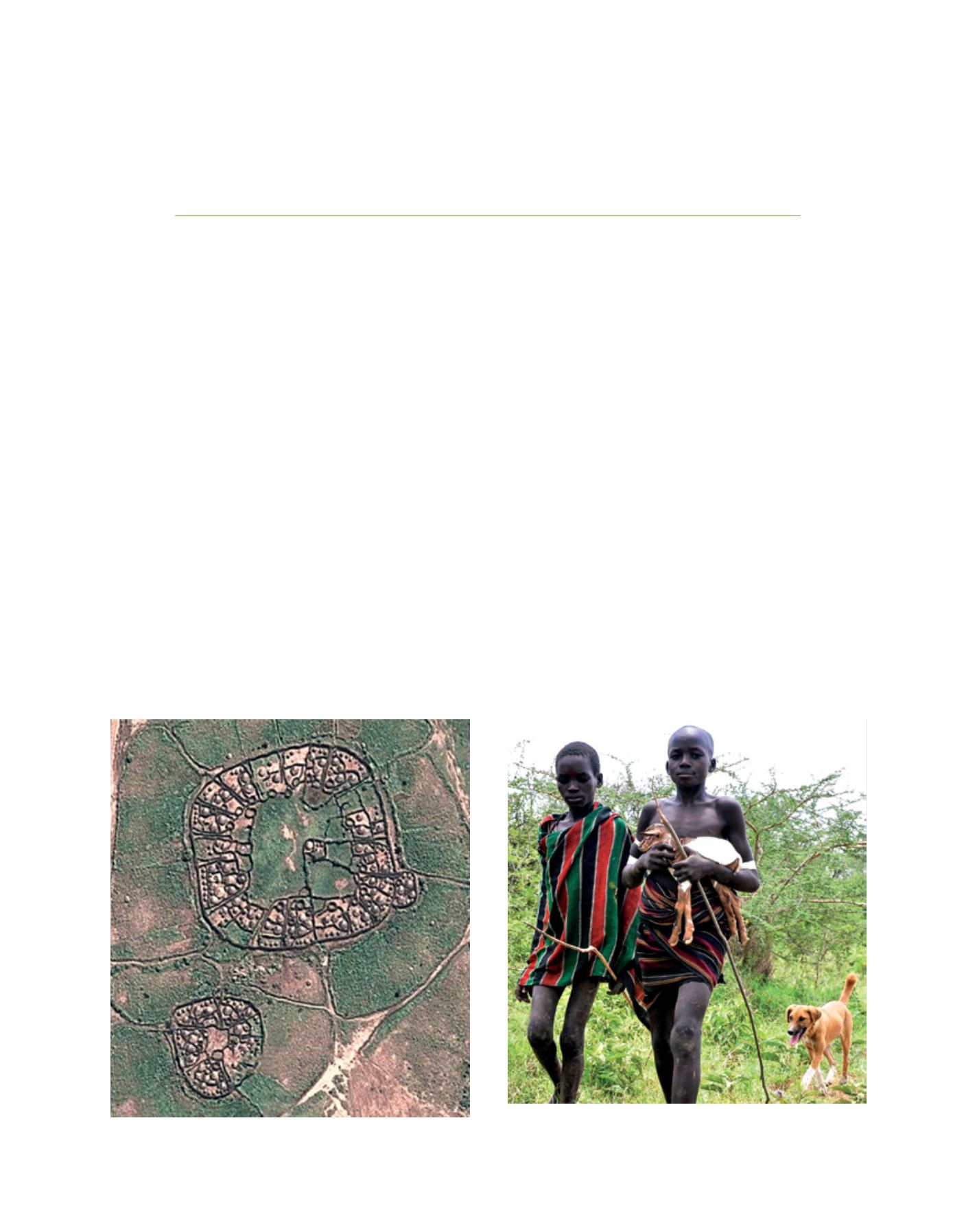

[
] 142
Food insecurity, drought and climate
change: the case of Karamoja, Uganda
A. J. Jordaan, Director: Disaster Management Training and Education
Centre for Africa, University of the Free State, South Africa
K
aramoja region in Uganda is among the most
underdeveloped, poor and food insecure regions
in the world. Bordered by an unstable and
violent southern Sudan to the north and arid western
Kenya to the east, Karamoja is the driest and poorest
region in Uganda.
1
The World Food Programme, other United Nations organiza-
tions and many non-governmental organizations (NGOs) are
involved in humanitarian aid and development programmes,
yet the region remains extremely poor and food insecure.
Recurrent droughts are blamed for its chronic food insecu-
rity. A drought risk assessment was carried out, and analysis
of the historical meteorological data does not point to a higher
occurrence of dry periods. However, the importance of
Karamoja’s vulnerability to dry periods due to economic,
social and environmental factors was highlighted.
Recurrent droughts, coupled with human and animal
diseases, conflict, sociopolitical challenges and economic
distortions, have resulted in famine and extreme poverty
among the Karamojong. Historically, these factors have
exacerbated the climate for increased internal and exter-
nal conflicts.
2
Means of livelihood in Karamoja were never
owned by an individual but by all people in the community.
Traditional weapons and firearm possession was common
to protect community assets from enemy raiders. Historical
intra- and inter-clan conflict over cattle and access to pastoral
land and resources like water also added to the adverse effects;
as did cross-border incursions by clans from neighbouring
South Sudan, and the Turkana and Pokot from Kenya.
The population in Karamoja has increased 3.5 fold since
2000 to just over 1.4 million today.
3
The increased pressure on
natural resources contributes to the perception or experience
of a rise in drought incidences in Karamoja. Most of Karamoja
experiences chronic food insecurity with approximately 82
per cent of the population living in extreme poverty. Life
expectancy of the Karamojong is only 47.7 years with infant
mortality of 178 per 1,000. Approximately 50 per cent of the
A satellite view of a manyatta in Karamoja
Pastoralists in Karamoja, like these young herders, own mainly
cattle, goats and sheep
Image: 2014 DigitalGlobe
Image: DiMTEC
L
iving
L
and
















